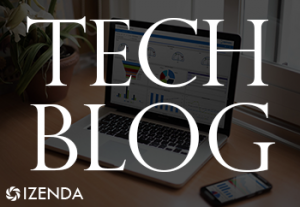 There is an often misused quote attributed to Henry Ford, although there is no evidence he actually said it. “If I had asked the people what they wanted, they would’ve said faster horses,” the old saying goes.
There is an often misused quote attributed to Henry Ford, although there is no evidence he actually said it. “If I had asked the people what they wanted, they would’ve said faster horses,” the old saying goes.
That sentence prompts a lot of discussion in business and marketing circles. Many people dismiss it, suggesting it claims organizations shouldn’t look to their customers for answers or solutions to problems. Others contend the “quote” was about not just listening but understanding your customer’s needs and asking the right questions.
Look at the phrase through the world of business intelligence and it takes a different twist. Shaun Connelly of Teradata did so in a recent blog:
“Business people can generally tell you what they want, but struggle to know or communicate what they need. To be successful, Business and IT need to collaborate, spar a little bit and figure out what’s possible in terms of objectives, analysis, and actions to drive specific results.”
Four Steps to Trust Your Data
Connelly suggests four steps that organizations can take to trust their data.
1. Have a strategy for all of your data. 2. Know what you need, not just what you want. (See the non-Ford quote above.) 3. Get maximum use from your data. Perhaps it can be used to answer multiple questions, not just one. 4. Have a plan for your data. You can start small, but have a roadmap to get you where you need to go. Look beyond answering one question.
Connelly correctly points out companies will not build out this kind of infrastructure overnight. It’s a process, he writes, leading to a data model in which the same data can be used to answer many different questions.
Seeing the Unstated Need
The late Steve Jobs of Apple was credited with knowing what the customers wanted before they did. The iPod revolutionized the music industry and how music is heard. The iPhone further demonstrated that understanding of the customer by centralizing music, video, email, a world of apps and a phone into one portable device that changed how people connect with each other.
Jobs wasn’t ignoring customers; he saw a need before they did, and filled it.
Getting The Big Picture
Ford undoubtedly saw the need was not for a “faster horse” but for getting people from place to place faster. Hence, the Model T. Today’s data-driven organizations are looking for an edge to leapfrog their competition. Moving quickly to gather data from basic questions may yield a “faster horse,” but miss the bigger picture of the business landscape. The data may give a cursory look at that landscape, but, unless properly framed and trustworthy, it may not tell you what’s missing.
The comparisons to Jobs or Ford are not to suggest that data-driven organizations will achieve their brilliance — or success. But a data-driven approach rooted in a deep understanding of the market can help in maintaining a competitive edge.
One of the key ways an organization can avoid missing the big picture is to ensure democratization of data. Empowering users through self-service BI tools is a must in today’s business environment, Gigaom Research wrote in a recent white paper. The paper states it is imperative to embed modern BI (reporting, dashboards and visualizations) in the application users’ daily work.
Gartner, in a recent report, wrote that the “tipping point” has been reached in power adoption of BI and analytics from 2015 onward. Half of net-new buying in BI this year will be driven by self-service requirements, the report said.
Izenda is an integration-ready .NET web application that allows organizations with on premise, cloud, SaaS, and enterprise applications to deliver modern self-service reports, dashboards, and visualizations. Find out more about our platform.

